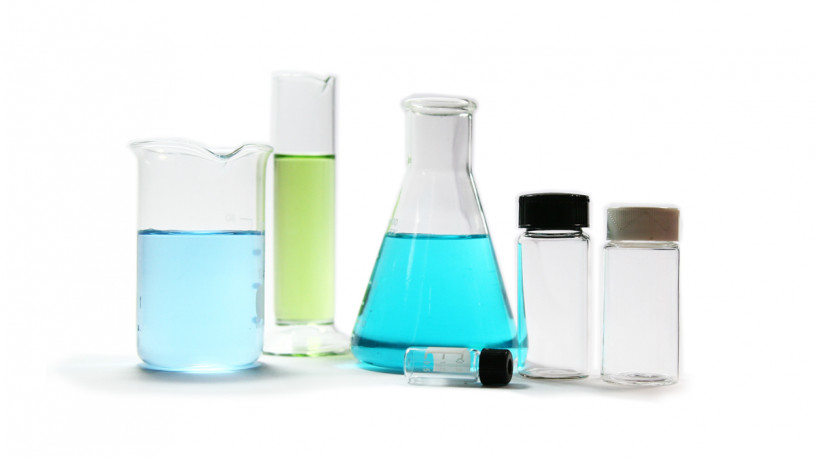-
Calls for more Safety Testing for Titanium Dioxide
 Continue Reading
Continue ReadingA recent study is calling into question the risks posed to humans from the consumption of food grade titanium dioxide. Whilst the research was unable to pinpoint specific risks, it did call for further research into the effects of TiO2 on human organs, as well as questioning if particle size can make a difference.
The study, which was published in the journal ‘Nanotoxicology’, was conducted by the Dutch National Institute for Public Health and the Environment (RIVM), and included an investigation which came in two parts, which the RIVM describes as follows:
“First, RIVM estimated the amount of titanium dioxide nanoparticles that the Dutch consumer daily ingests via food, food supplements and toothpaste. This was calculated by using measured concentrations in food products and toothpaste, which were linked to information on the intake of food products. The products contributing most to the intake of TiO2 are toothpaste (in young children only), candy, coffee creamer, fine bakery wares and sauces.
Second, RIVM performed a risk assessment by estimating the concentration of titanium dioxide nanoparticles in human liver, and subsequent comparison to the concentration in the liver of test animals for which adverse effects were found. The accumulation of particles in time was taken into account in these calculations.”
With these actions completed the research team were able to state the following, “Based on this investigation and considering the differences between man and animals and sensitive people, it appears that liver effects cannot be excluded. To gain better insight into the likelihood of effects after long-term exposure (such as via food), further research is recommended.”
Much of the concern is based around the unknown effects of TiO2 when it is consumed in different particle sizes. As the RIVM report explains, “No limit has been set for the amount of titanium dioxide that man can daily ingest. It is nowadays known that very small particles, such as nanoparticles, can behave differently from larger particles of the same chemical composition. The small particles have a relative large surface area and can therefore be reactive and may cause harmful effects. In addition, they may end up at different sites in the human body.”
Meanwhile, Dr Emma Davies reporting for ChemicalWatch recently quoted a report conducted by the Scientific Panel of the European Food Safety Authority (ANS), when she stated that, “Although food grade titanium dioxide is not considered a nanomaterial, it may contain about 3% nanoparticles, reports the ANS. It says studies show that most titanium dioxide passes through the body unchanged but that ‘a small amount’ (up to 0.1%) can be absorbed in the gut and distributed to organs.”
She continues by observing how, “The ANS was unable to set an acceptable daily intake (ADI) because of a lack of information. Additional testing on food grade titanium dioxide, such as an extended 90-day rodent study or a multi-generation or extended one-generation reproductive toxicity study (Eogrts), ‘would help to clarify possible reproductive effects and provide more comprehensive data for deriving an ADI’.
Analysis of the EFSA report into the effects of TiO2 on human health, finds that, “The Panel noted that possible adverse effects in the reproductive system were identified in some studies conducted with material which was either non-food-grade or inadequately characterised nanomaterial (i.e. not E 171). There were no such indications in the available, albeit limited, database on reproductive endpoints for the food additive (E 171).”
So it seems that while some studies have found a link between TiO2 and a negative effect on human health (mostly in the liver or reproductive organs) for now it has been deemed safe for human consumption.
That said, the versatile food additive chemical is not yet free and clear, as both reports make clear that there is little information available for analysis, and that further research is needed ‘to fill data gaps’.
However, perhaps what is most interesting from the report is the question mark remains on the importance of particle size of chemicals. As the RVIM report says, “It has become clear that nanoparticles can behave differently as compared to larger particles or soluble substances.”
And if this is the case, how certain can we be of the safety of so many other chemical food additives?
Photo credit: RVIM
-
Has the TiO2 Price Reached the Bottom?
 Continue Reading
Continue ReadingSometime last week the Sichuan Lomon Corporation announced that it had raised the price of its titanium dioxide products by 3%. This has led to chemical industry leaders to wondering if the price had at last reached the bottom and was now moving up.
As Sichuan Lomon is one of the largest rutile titanium dioxide pigment suppliers in China, its actions are closely followed by industry experts, with many, like Yang Xun, a titanium dioxide analyst with the Chinese commodity information provider 100ppi.com, believing that other producers will follow suit over the coming weeks.
For many price hikes would bring much relief after prices fell considerably throughout the second half of 2015.
It is thought that the chemical price increases were a result of falling production, as many of the larger industry players are running at 50% of capacity in an attempt to lower inventories. Other producers were using the fall in demand as opportunity to update plant machinery and carry out maintenance.
Whilst the Xinhua Finance Agency reports that, “Sichuan Lomon is expected to see a fall in output in January.” The agency also cites further realignments in the TiO2 market as, “At present, the [price] divergence between high-quality producers and the tier-3 and tier-4 producers has been obvious. The high-quality producers have seen tight sourcing of supplies causing pressure on production, while the tier-3 and tier-4 producers have continued to find it hard to sell.”
Whatever the reason for the price rise, it is feared that the 3% rise may only be a temporary measure, as there is still speculation that overall demand will continue to drop as the Chinese stock market and housing bubble continues to create uncertainty.
Furthermore, it is not yet known how global markets will react. Will other TiO2 producers raise their prices? Has the market finally reached the bottom?
-
How can you Predict Titanium Dioxide Prices?
 Continue Reading
Continue ReadingThere can be few chemicals as misunderstood or as little known about by the general public as Titanium Dioxide. Which is strange given that we are rarely more than three metres away from it at anytime in our lives.
It is an incredibly versatile chemical, that can be found in everything from paints to paper, sunscreen to plastic. And yet such is TiO2’s noteriety, that it is perhaps most famous for where it can’t be found, when media pressure against Dunkin Donuts, forced the snack producer to remove it as an ingredient. Such is the chemical’s usefullness that it had been added to the powered sugar, as CNN reported at the time, “to make the powdered sugar appear brighter”.
Yet what is strange again, is that a product that is so important for today’s consumerist world should have a price that fluctuates so greatly. This is especially true given that is has such widespread availability, sourced as it is from ilmenite, and has four well-established, big name producers, in Kronos Worldwide, DuPont, Cristal Global and Tronox Limited (plus a further host of smaller manufacturers). These big four, according to the International Business Times, “account for over 50 percent of the global net production volumes.”
Amongst a myriad of other reasons, in the past twenty years, prices have been held high by an increase in the use of sunscreen. Also having an effect was the increase in demand for Solar panels, a trend that is expected to continue. A view supported by market research consultants, Grand View Research, which stated that, “the mineral (TiO2) is expected to experience a rise in demand from the growing photovoltaic modules industry.”
Further price pressure has come from China, through its phenominal growth as a consumer of plastics, paints, paper and just about everything else.
Yet in the bizare world of Titanium Dioxide pricing, at the same time, China also caused downward price pressure. This was due to it’s construction boom that increased the demand for iron, thus increasing iron production. This in turn aided Titanium Dioxide production, as Paint and Coatings Magazine explains, “China’s imports of approximately half a million tonnes, while making up a large part of global demand, have declined in recent years. The reason for this is the prodigious rate at which Chinese miners are producing ilmenite. Much of the mineral is sourced from Sichuan province where it is found together with magnetite. The high iron ore prices that prevailed when the magnitude of China’s construction boom took everyone by surprise have allowed some of the larger Chinese miners to produce very low-cost ilmenite.”
Today, prices still fluctuate greatly. Analysis by market researchers CCM, shows that prices in China “have been rising steadily since March, with rutile TiO2 prices increasing 4.8% between late February and June 1, while anatase TiO2 prices rose 6% over the same period.”
Purchasers hope that prices have reached a peak, now that high prices have made production expansion more viable. So that there are a now a number of newly opened and pending manufacturers, including, as the International Business Times reports, “significant contributions from smaller producers in the near future (as well as) White Mountain Titanium Corp, which is expected to join global commerce in 2017, (and) is now gaining industry reputation for its works on the Cerro Blanco Property… a sprawling 17,041-hectare rutile deposit in Santiago, Chile owned by the company, (which) is expected to produce 112 million tonnes of rutile.”
Another reason why the price of Titanium Dioxide is expected to fall in the coming months is the decrease in paint production in China. As China’s National Bureau of Statistics states, “China’s output of coatings in April was down 5% year on year, mainly due to the slowdown in the real estate market – the total area of new housing projects under construction during January-April 2015 was down 17% on last year.”
Furthermore, sluggish demand from plastics producers, caused by low oil prices, is also making speculators foresee a TiO2 price drop. As CCM makes clear, “The plastics market is strongly influenced by oil prices, so if there is a sudden rise in global oil prices (this) will breathe new life into the market (for TiO2). However, at the moment the plastics market is not looking like a likely source of strong demand for TiO2.”
In the strange world of Titanium Dioxide, it is both its versatility and its widespread production that causes price fluctuations. Being so widely used, means that a fall or rise in the demand for paint, plastics, cars, houses, paper, sunscreen or solar panels, will all have an affect on price. Given that this is the case, it is possible that over-analysis of data from too many sources can result in inaccurate predictions.
At present, many analysts expect prices to start a downward trend, but it is a keen trader who would bet the farm on that! Instead, buyers and sellers must be open-minded when it comes to future prices and possibly accept fluctuations as part of the weird world that is Titanium Dioxide.
